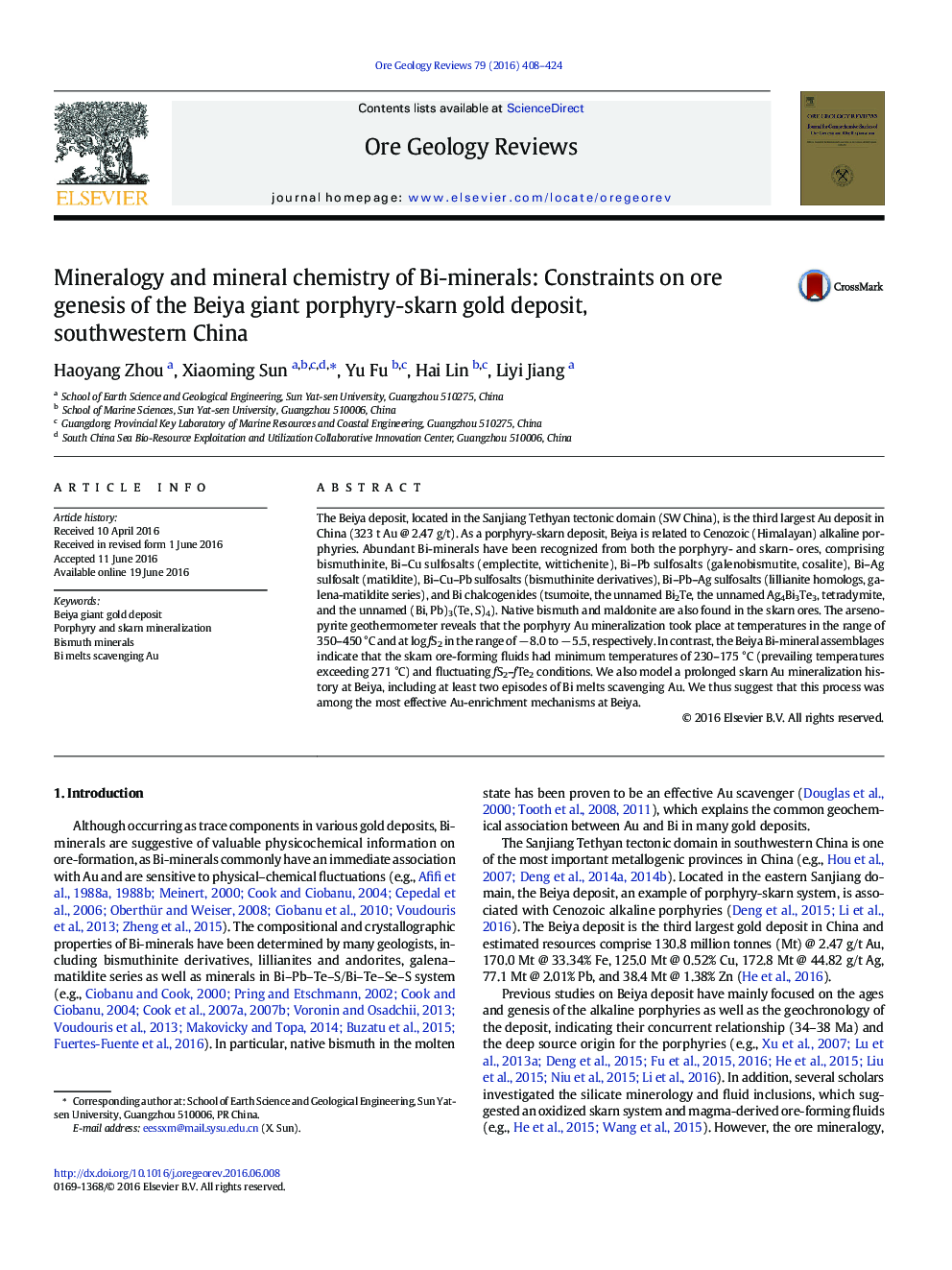| کد مقاله | کد نشریه | سال انتشار | مقاله انگلیسی | نسخه تمام متن |
|---|---|---|---|---|
| 4696806 | 1637227 | 2016 | 17 صفحه PDF | دانلود رایگان |
• Beiya is the largest gold deposits in the “Sanjiang” Tethys–Himalaya orogenic belt.
• Bismuth minerals were recognized from both the skarn and porphyry mineralization at Beiya.
• Bismuth assemblages indicate prevailing temperatures exceeding 271 °C and fluctuant fS2–fTe2.
• At least two stages of bismuth melts effectively scavenged gold.
The Beiya deposit, located in the Sanjiang Tethyan tectonic domain (SW China), is the third largest Au deposit in China (323 t Au @ 2.47 g/t). As a porphyry-skarn deposit, Beiya is related to Cenozoic (Himalayan) alkaline porphyries. Abundant Bi-minerals have been recognized from both the porphyry- and skarn- ores, comprising bismuthinite, Bi–Cu sulfosalts (emplectite, wittichenite), Bi–Pb sulfosalts (galenobismutite, cosalite), Bi–Ag sulfosalt (matildite), Bi–Cu–Pb sulfosalts (bismuthinite derivatives), Bi–Pb–Ag sulfosalts (lillianite homologs, galena-matildite series), and Bi chalcogenides (tsumoite, the unnamed Bi2Te, the unnamed Ag4Bi3Te3, tetradymite, and the unnamed (Bi, Pb)3(Te, S)4). Native bismuth and maldonite are also found in the skarn ores. The arsenopyrite geothermometer reveals that the porphyry Au mineralization took place at temperatures in the range of 350–450 °C and at log fS2 in the range of − 8.0 to − 5.5, respectively. In contrast, the Beiya Bi-mineral assemblages indicate that the skarn ore-forming fluids had minimum temperatures of 230–175 °C (prevailing temperatures exceeding 271 °C) and fluctuating fS2–fTe2 conditions. We also model a prolonged skarn Au mineralization history at Beiya, including at least two episodes of Bi melts scavenging Au. We thus suggest that this process was among the most effective Au-enrichment mechanisms at Beiya.
Figure optionsDownload as PowerPoint slide
Journal: Ore Geology Reviews - Volume 79, December 2016, Pages 408–424
